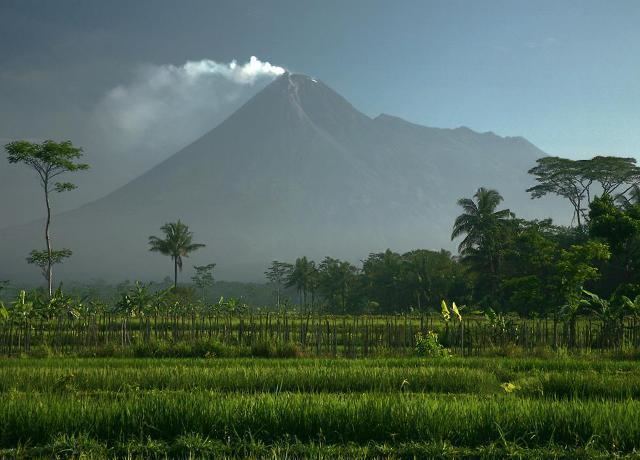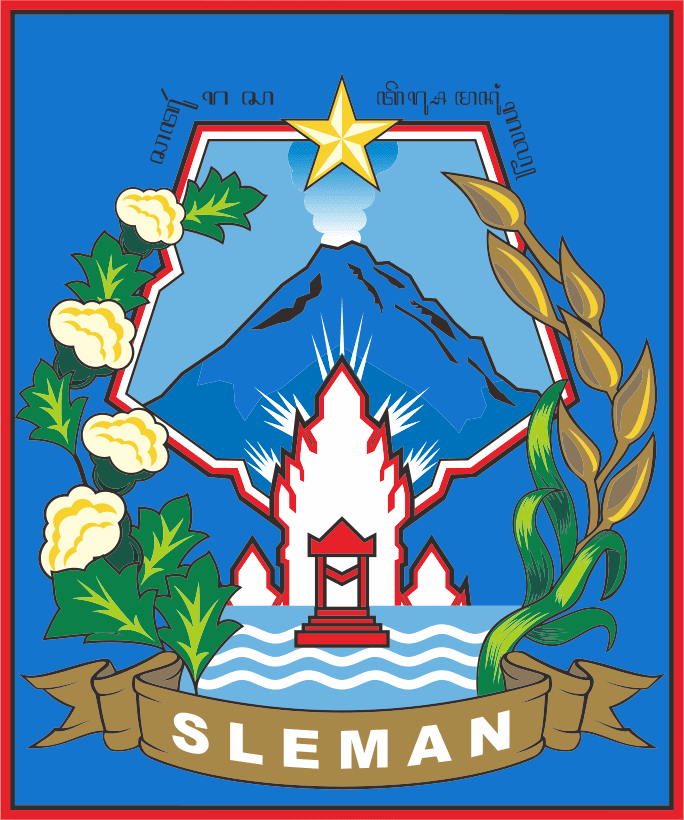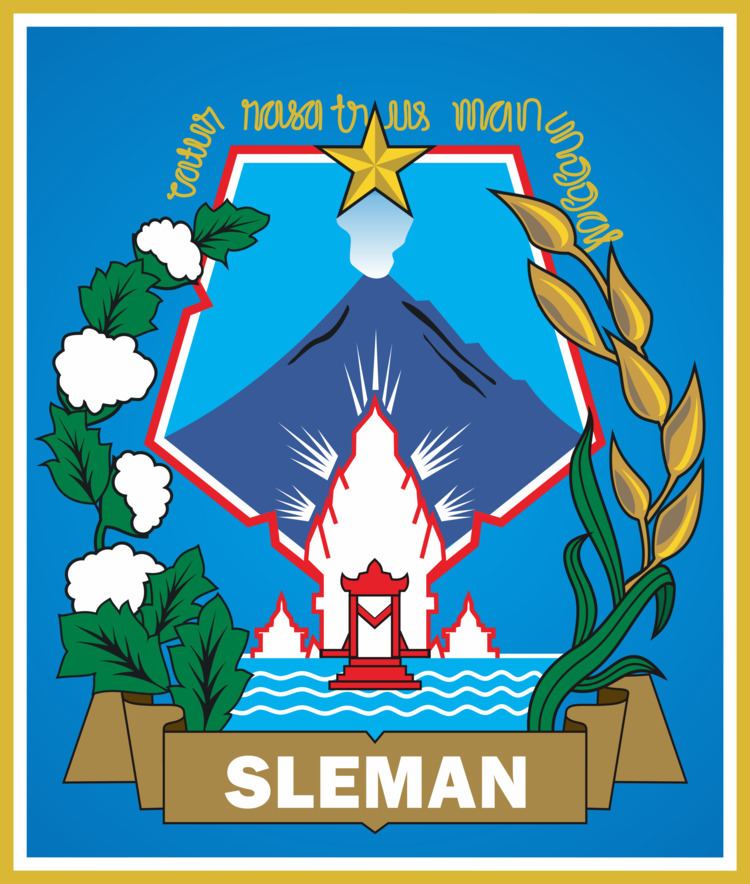Incorporated 8 August 1950 Time zone WIB (UTC+7) | Area 574.8 km² | |
 | ||
Kecamatan ListTuriPakemCangkringanTempelSlemanNgaglikNgemplakMinggirSeyeganMlatiDepokKalasanMoyudanGampingBerbahPrambanan Colleges and Universities Sanata Dharma University, YKPN School of Economic, Ambarrukmo Tourism Institute, Sekolah Tinggi Ilmu Manajem, Proklamasi '45 University | ||
Sleman ([səˈleman]) is an Indonesian regency (Indonesian: Kabupaten) on the island of Java. It is located in the north of the Yogyakarta Special Administrative Region, Indonesia, and has an area of 574.82 square kilometres (221.94 sq mi), with a population of 901,400 at the 2010 Census. Its capital is the town of Sleman. The current regent is Sri Purnomo.
Contents
- Pre Incorporation
- Post Incorporation
- Geography
- Administration
- Climate
- Economy
- Agriculture
- Education
- Tourism
- References

Pre-Incorporation

During the 8th century, the Buddhist Sailendra dynasty controlled Sleman, building numerous temples such as Kalasan. The palace itself was at Ratu Boko.

After the fall of the Sailendra dynasty, the Mataram Kingdom ruled over Sleman, taking control of Ratu Boko palace and eventually commingling with the remnants of the Sailendra dynasty.

The Sanjaya dynasty, which replaced the Mataram kingdom, later ruled over Sleman and is believed to have built Prambanan c. 850 CE.
Post-Incorporation

Sleman was incorporated on 8 August 1950 with the passing of the Law of the Republic of Indonesia Number 15 1950 about the Creation of Regencies within the Special Region of Yogyakarta.
In 2010, numerous eruptions of Mount Merapi and the cold lahar floods afterwards killed 353 people and caused over Rp. 5.5 trillion (US$ 610 million) in damages.
Geography
Sleman is located on the northwest border of Yogyakarta Special Region, between the city of Yogyakarta and the Magelang Regency. It is bordered by Central Java to the north and east, Kulon Progo, Bantul, and Yogyakarta to the south, as well as Gunung Kidul to the south-east. Mount Merapi is located on the northeastern border of the regency.
Administration
The regency of Sleman is divided into 17 districts (kecamatan), tabulated below with their 2010 Census population.
Climate
Sleman features a tropical monsoon climate. The regency features a lengthy wet season generally running from October until June and a short dry season that only covers the months of July, August and September. The Regency averages roughly 2200 mm of precipitation annually. Sleman experiences particularly heavy rainfall from November through April. Temperatures remain relatively constant throughout the course of the year, with average high temperatures at around 30 degrees Celsius and average lows at around 22 degrees Celsius. There is slight variation within Sleman. The northern areas, near Mount Merapi, are much cooler due to the higher altitude. The southern area has nearly the same climate as Yogyakarta, due to their proximity.
Economy
Sleman is heavily agrarian. However, due to the expansion of Yogyakarta there are some areas that have been urbanized, with malls, hotels, and supermarkets being built. Tourism is also being developed to take advantage of the numerous temples found in Sleman, as well as Mount Merapi.
Agriculture
Due to ashfall from Mount Merapi and easy irrigation, the land in Sleman is very fertile. The soil is thick, with a favourable moisture capacity level. As such, rice yields are considerably high. The area is also well known for its production of salak pondoh, which is also its official plant.
Education
There are 29 universities that have campuses in Sleman, including Sanata Dharma University, Gadjah Mada University, Atma Jaya University, Islamic University of Indonesia, Yogyakarta State University and Sunan Kalijaga Islamic University.
Tourism
Sleman is home to many temples, including Prambanan, Sari, Kalasan, and Ijo. As well as temples, there are ruins of an ancient palace, namely Ratu Boko. These temples and ruins, thought to be remnants of the Buddhist Sailendra dynasty and the Hindu Mataram kingdom, are all open to the public. However, Prambanan is the most popular for tourism, drawing thousands of local and foreign tourists each year.
Sleman also has a number of tourist villages including Brayut and others.
Due in part to the scenic view at the foot of Mount Merapi, ecotourism has become common in Sleman. One of the most common destinations is Kaliurang, a resort town located in the Pakem district.
Sleman includes the Adisucipto International Airport within its boundaries. There are numerous hotels in Sleman, ranging from small homestays and inns to multi-star hotels. The higher-end, multi-star hotels are located mainly near the road between Yogyakarta and Surakarta, with homestays and inns scattered throughout the regency.
Sleman is home to several museums including:
After the 2010 eruptions of Mount Merapi, the areas affected have become disaster tourist attractions. Tourists come from around Indonesia to see the disaster area, either for leisure, to pay their respects, or reflection.
